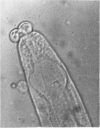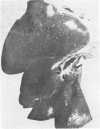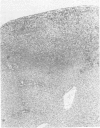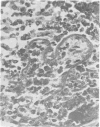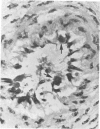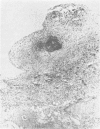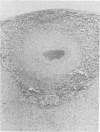Abstract
Pony foals inoculated with infective Strongylus edentatus larvae were monitored for clinical signs and selected blood changes and were examined at necropsy from two to 56 days postinfection. Larvae penetrated the intestine and reached the liver intravenously before 40 hours postinfection. Occasional thrombi and larval tracks associated with the intima of cecal and colic veins suggested aberrant paths. Larvae in the liver doubled in width between seven and 15 days postinfection and a sudden increment in circulating eosinophils occurred between 11 and 15 days. These changes were probably associated with the third molt. At 30 days fourth stage larvae were migrating in the liver; at 42 days they were present in the hepatorenal ligament.
White foci were observed in the liver from two to 56 days. They contained mononuclear cells and eosinophils and later necrotic cores of eosinophils. By one month foci were overshadowed by tortuous tracks of migrating larvae. Aberrant larvae in the lungs were confined in granulomas. Massive granulomas in the wall of the cecum and colon contained small larvae which were probably inhibited by antibody associated with the third molt. Severe disruption of omental architecture and adhesions involving the intestine occurred several weeks after infection.
Full text
PDF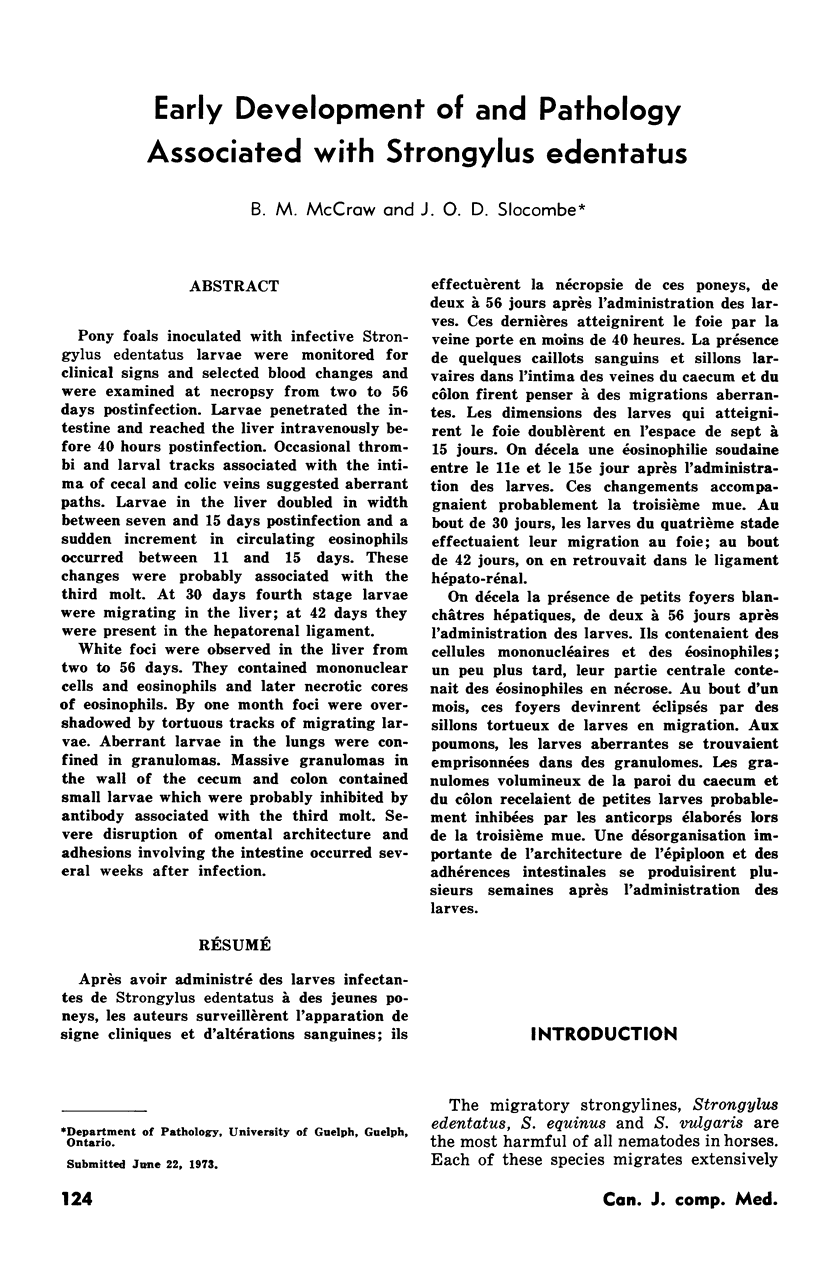

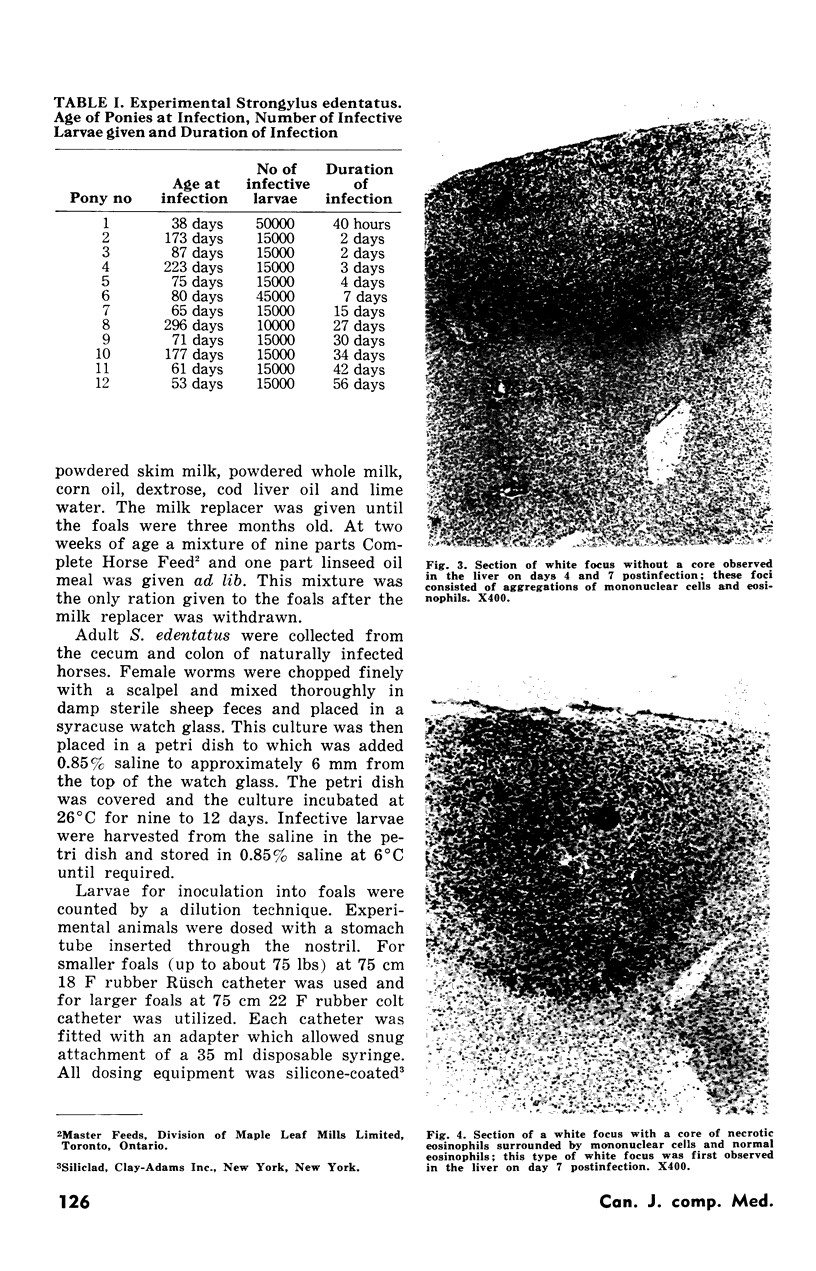

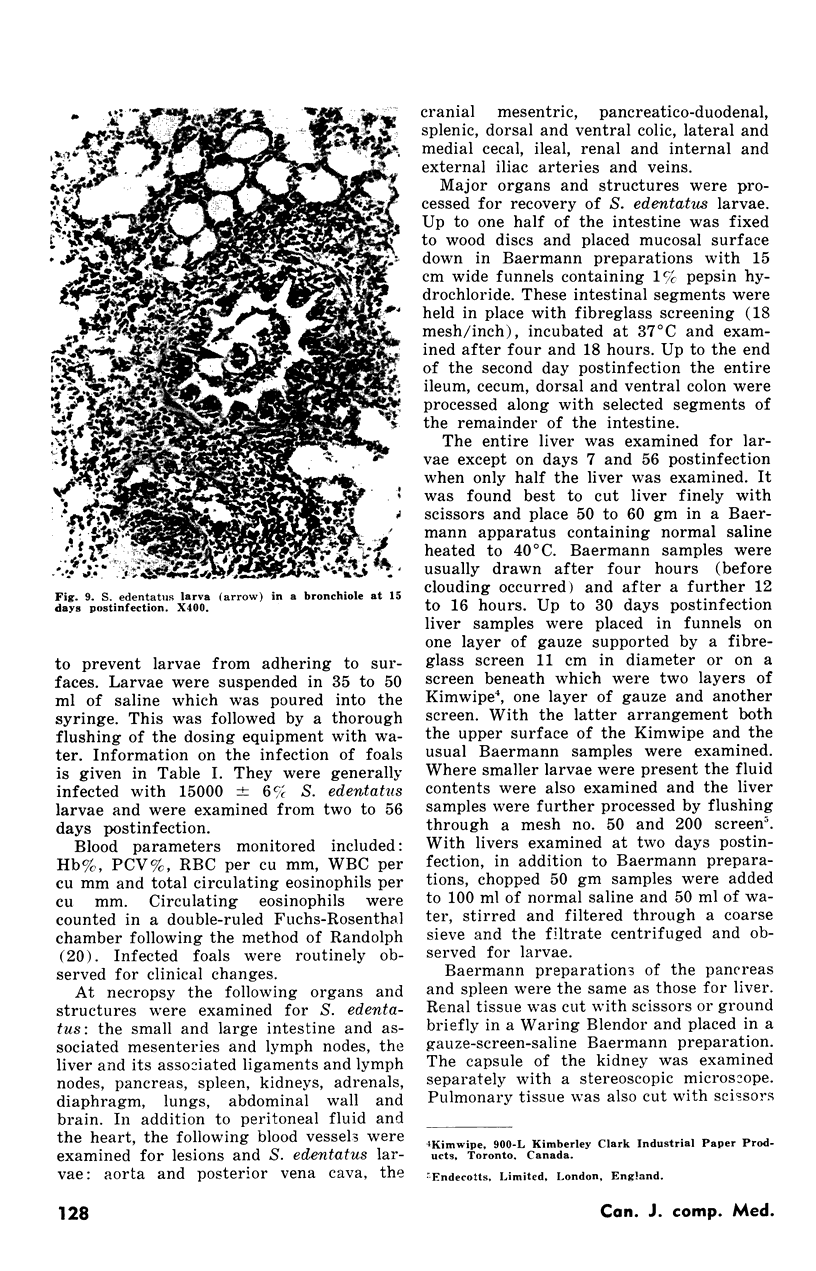

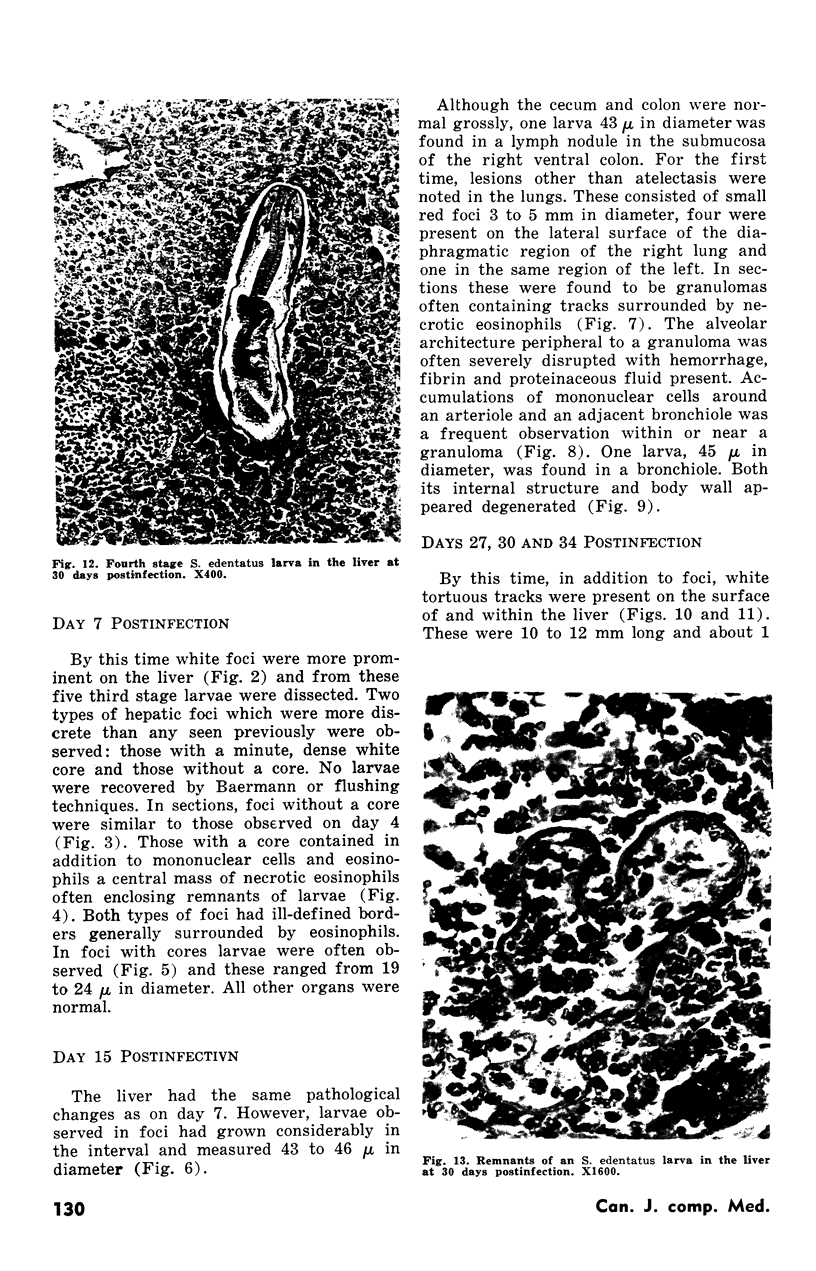
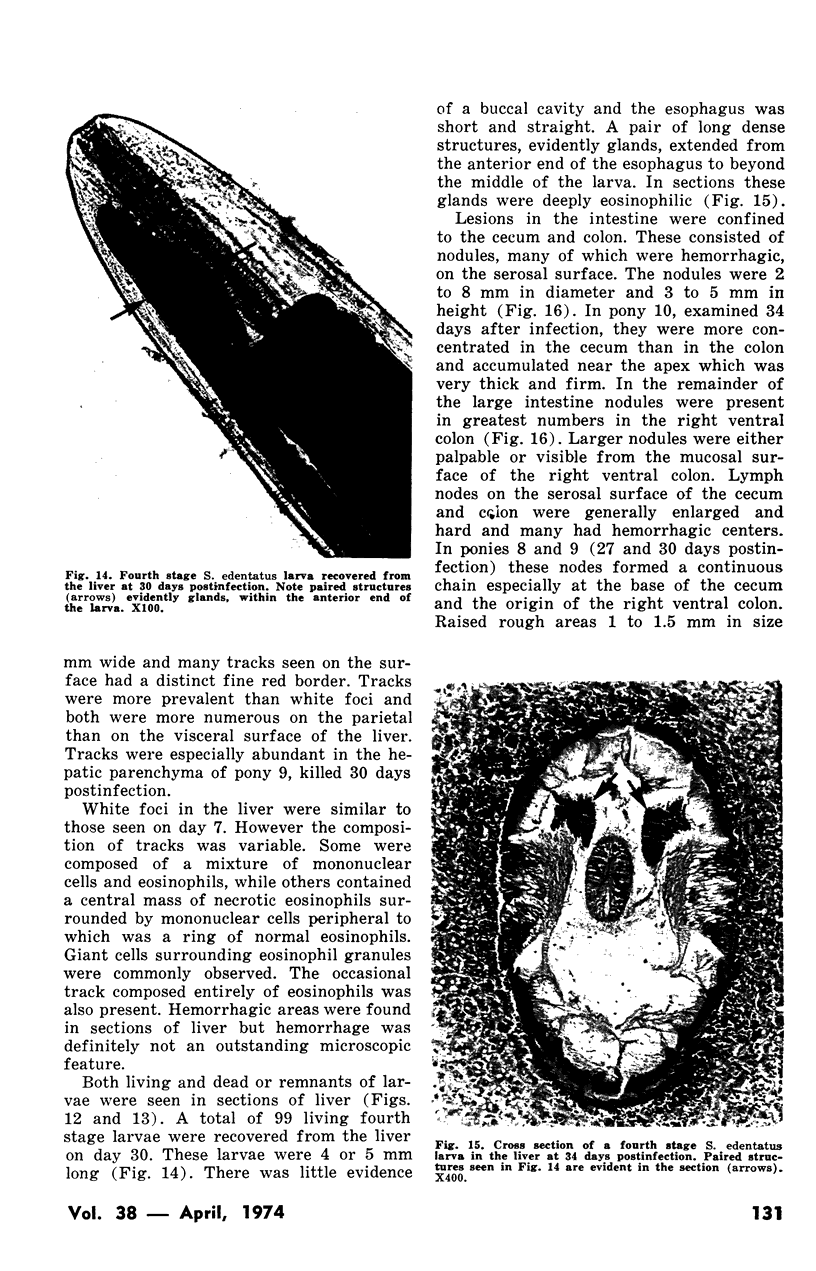



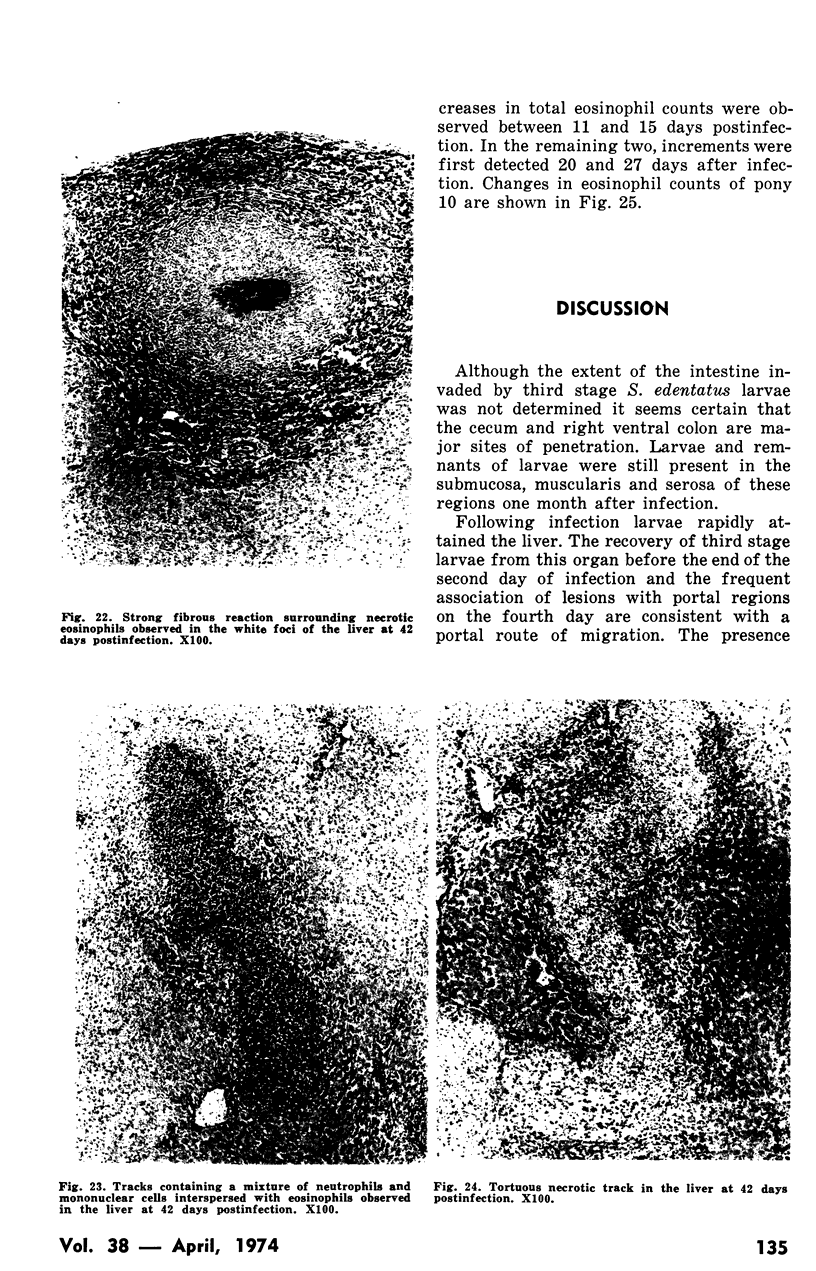



Images in this article
Selected References
These references are in PubMed. This may not be the complete list of references from this article.
- Duncan J. L., Pirie H. M. The life cycle of Strongylus vulgaris in the horse. Res Vet Sci. 1972 Jul;13(4):374–379. [PubMed] [Google Scholar]
- Greenway J. A., McCraw B. M. Ascaris suum infection in calves. II. Circulating and marrow eosinophil responses. Can J Comp Med. 1970 Jul;34(3):238–246. [PMC free article] [PubMed] [Google Scholar]
- McCraw B. M., Greenway J. A. Ascaris suum infection in calves. 3. Pathology. Can J Comp Med. 1970 Jul;34(3):247–255. [PMC free article] [PubMed] [Google Scholar]
- Montali R. J., Strandberg J. D., Squire R. A. A histochemical and ultrastructural study of intimal bodies of horse arterioles. Lab Invest. 1970 Sep;23(3):302–306. [PubMed] [Google Scholar]
- Slocombe J. O., McCraw B. M. Gastrointestinal nematodes in horses in Ontario. Can Vet J. 1973 May;14(5):101–105. [PMC free article] [PubMed] [Google Scholar]



